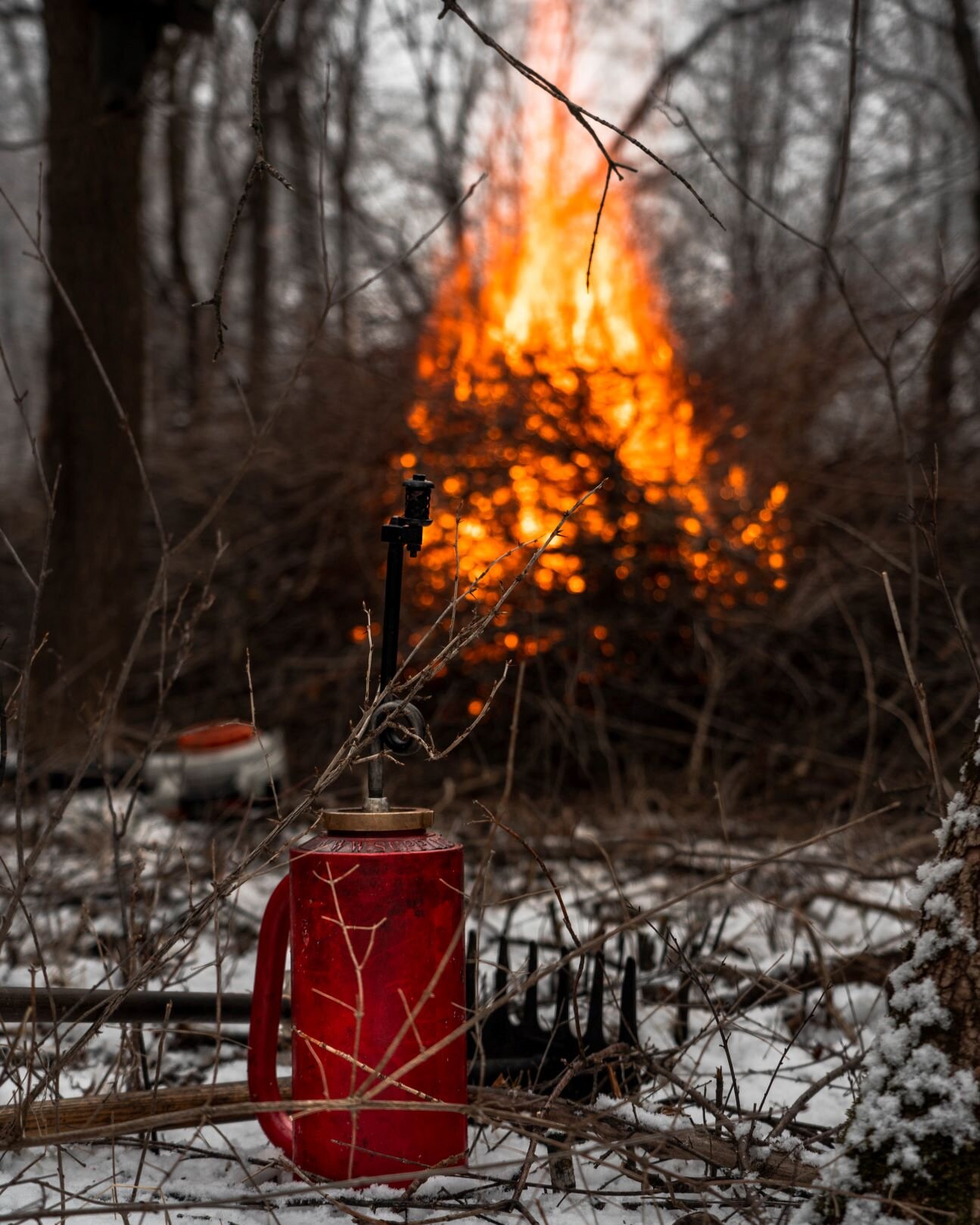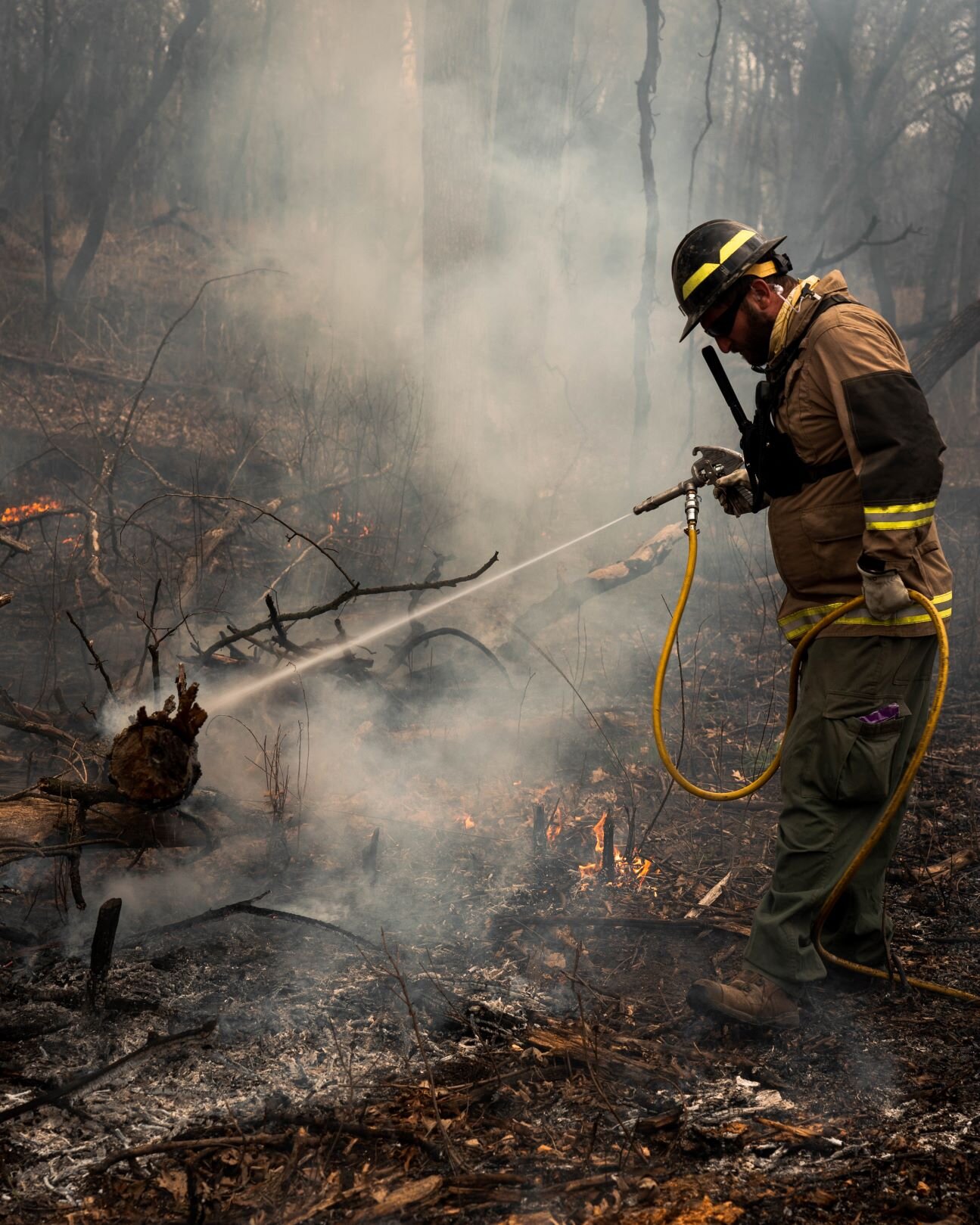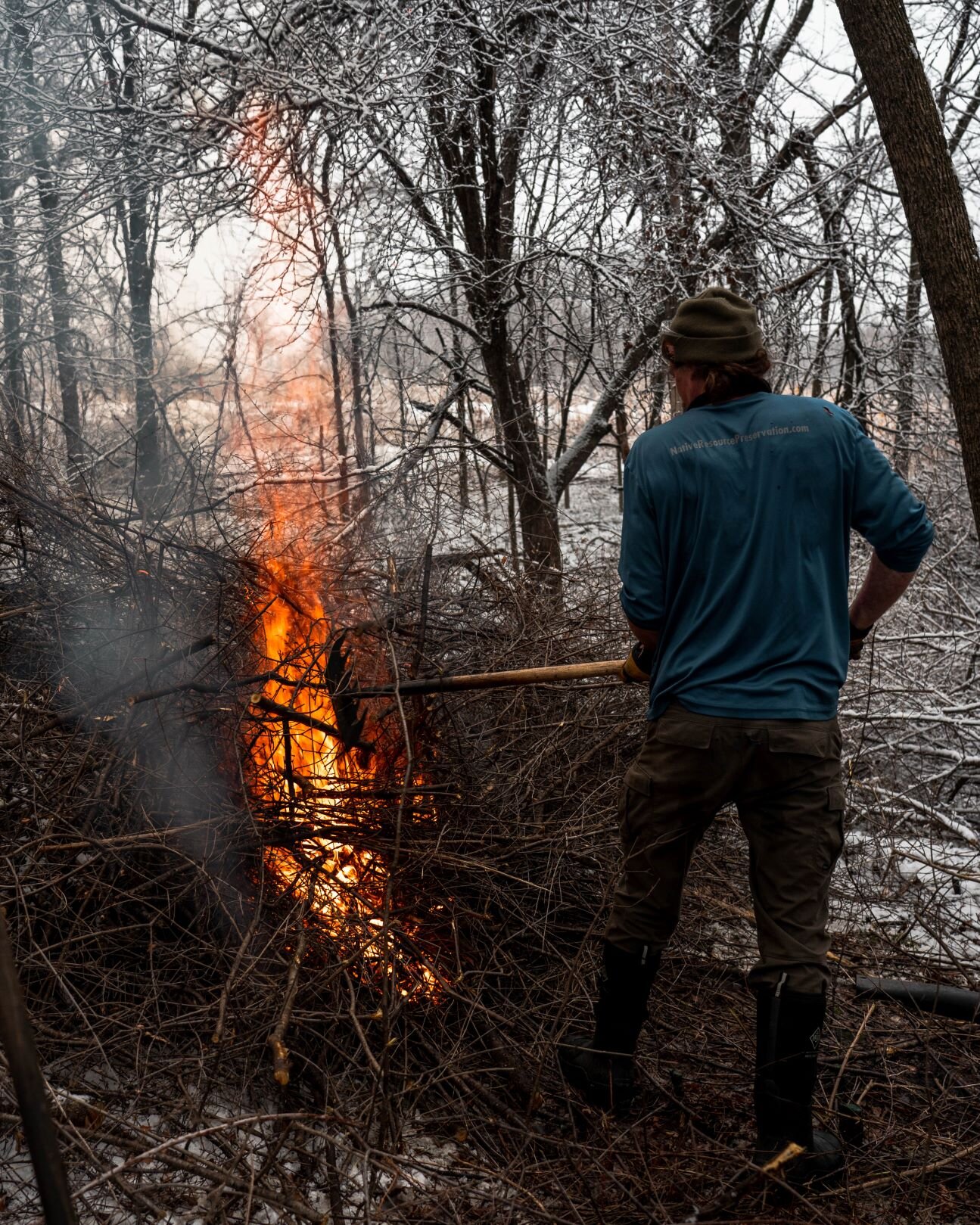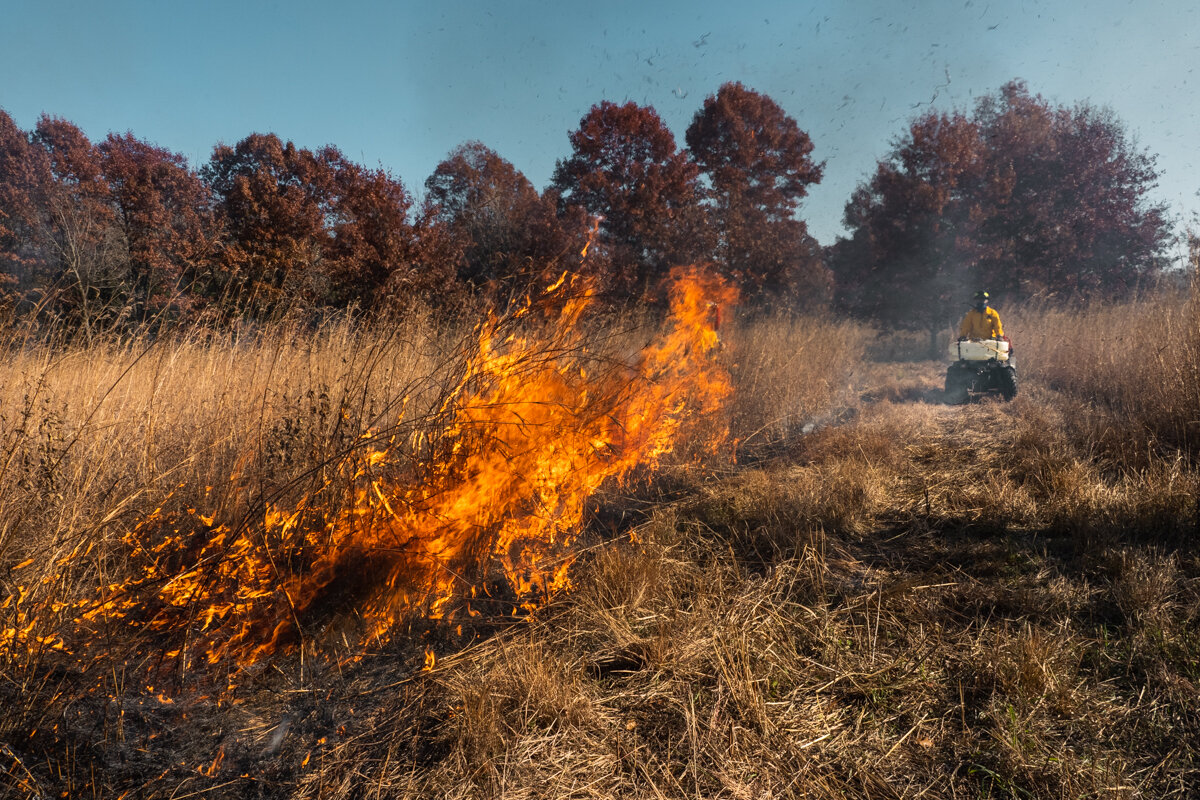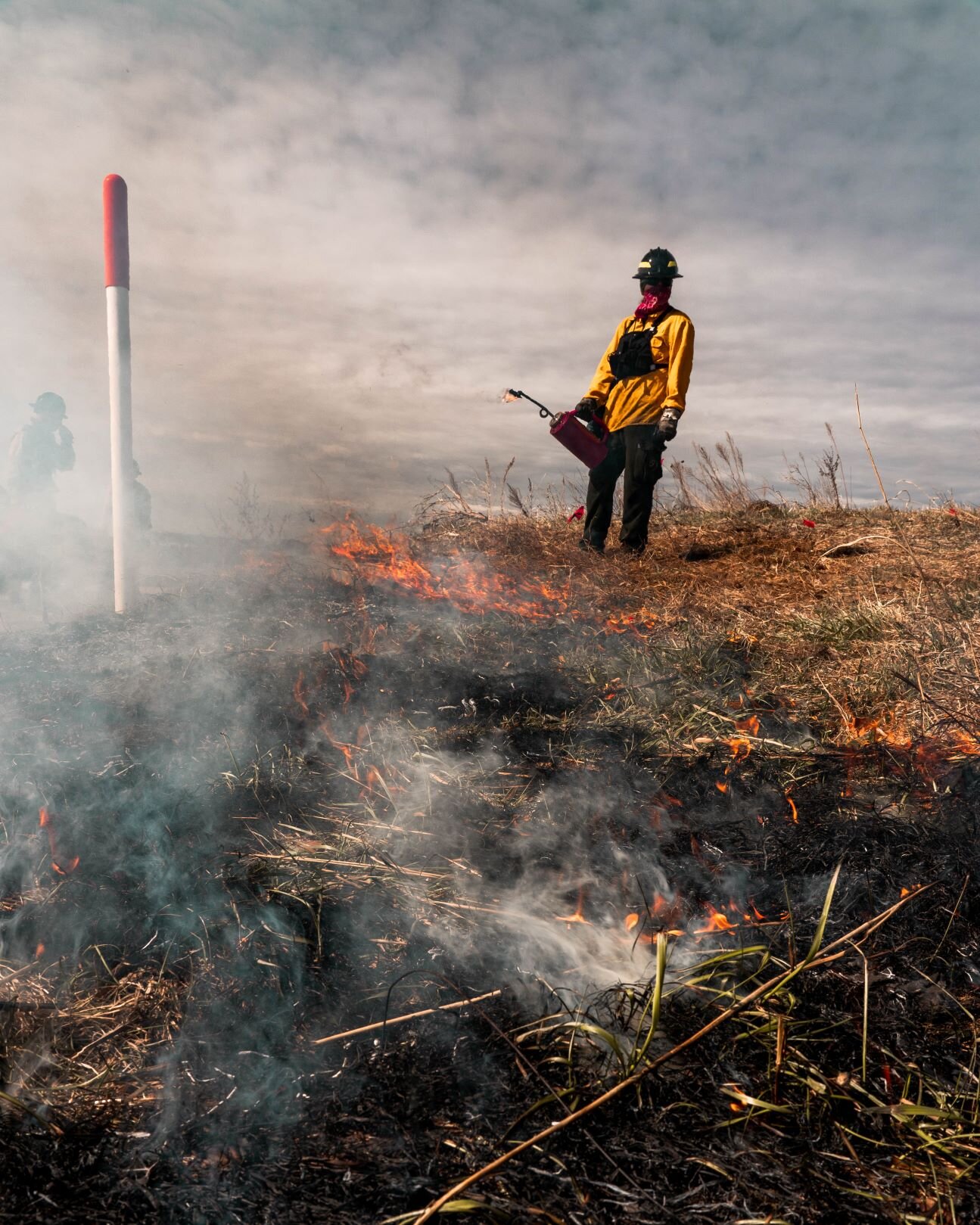Prescribed Fire
Fire is a natural disturbance in many ecosystems. It plays an important role in returning nutrients to the soil, as well as preventing thick understory plant growth. Land changes over the last few centuries have altered natural fire regimes, oftentimes eliminating fire completely from landscapes. This has caused major habitat and ecosystem changes, including the encroachment of forests into historic prairie areas, and the increased success of invasive species. Returning fire to ecosystems is an important part of ecological restoration.
By conducting prescribed burns, we can control when and where fire occurs--making it much safer than wildfire, and helping us direct it into the habitats most in need of restoration.
Why Burn?
There are many reasons why a prescribed burn may be beneficial for a landscape or habitat. We use prescribed burns as a versatile tool for many situations such as site prep, maintenance, or ecosystem recovery.
Limit Invasive Species: Most non-native species are not adapted to the natural fire regime of this region, while many of our native species are fire tolerant due to adaptations like long root structures or thick bark. Therefore, burning can be useful for controlling invasive or non-native species by giving native species a competitive advantage.
Soil Nutrients: When plant material is burned, the nutrients can be returned to the soil. Prescribed burns act like a reset, enriching the soil with more nutrients.
Site Prep: A recently burned site makes the perfect canvas for planting or seeding. Burning before seeding is a way of mimicking natural successional processes, but allows us to control what kind of plant communities return to the site, allowing us to restore native habitats. The blackened earth also absorbs more sunlight, improving growing conditions.
Wildfire Prevention: Although historically a natural part of landscapes, wildfires can be devastating when they grow out of control and threaten homes and lives. Prescribed fire burns away vegetation fuels in a controlled manner. Fewer ground fuels helps prevent wildfires from getting too large and uncontrollable.
Oak Regeneration: Oak trees are impressively fire resistant. Their thick bark protects them from low-intensity fires, and their seedlings can survive even partial burning from fire. The temperate hardwood forests of the upper Midwest were historically oak dominated because of fire. Oak trees are very slow growing, and their seedlings can easily be crowded out by faster growing species like maple and aspen. Frequent fire helps oak regeneration by knocking back seedlings of faster growing species that are not adapted to fire. Returning fire to forests through prescribed burning is a key part of oak forest regeneration.
Prairie Maintenance: Prairies are fire-friendly ecosystems. Native prairie grasses and flowers have long root structures that allow them to easily survive fast burning surface fires. Fires also burn off old, dead plant material, returning it to the soil and opening up light for new growth to thrive.
Debris Removal: Rather than haul away unwanted plant material like cut buckthorn stumps, we like to burn them directly on-site. Burning on-site returns the nutrients of the removed material to the soil, maintaining the nutrient cycle in that site. Also, by burning on-site, we eliminate the likelihood of spreading invasive seed or fruits in transit.
Wildlife Habitat: Sometimes hesitations arise about prescribed fire with concern for wildlife safety. However, like native plants, native wildlife have evolved with historic fire, making them equally adapted to surviving. Prescribed fire benefits wildlife habitat by promoting native species, clearing understory vegetation to create openings for movement and foraging, and provides new food sources from the regrowth that occurs after a fire. Additionally, with prescribed burns, we can control when fire happens to avoid crucial times for wildlife such as nesting season.
WHen to burn
Every ecosystem is different. Many prairies are evolved for frequent burns every 2-5 years, while hardwood forest systems may only require burns every 5-10 years, and boreal forests even less. If the site is a new restoration that has a lot of invasive species present, burning every year may be necessary to give native species a competitive edge.
Burn season in the upper Midwest is typically in spring (March-April) and Fall (October-November). Spring burns prepare plants for the growing season by clearing dead plant litter from the winter, releasing nutrients into the soil, and increasing light availability. Fall burns release nutrients into the soil and can prepare sites for a dormant-season seeding. Summer burns are often ineffective because humidity is too high, or are too risky if hot, drought conditions are present. Winter is often too cold and snowy to burn.
Why Choose Us for Your Burn
Prescribed burns mean all hands on deck for us at NRP. We bring a high level of skill and attention to detail to ensure that every prescribed burn is conducted safely and effectively. Our burn bosses have combined 300+ burns and 15,000+ acres worth of experience under their belts, bringing skilled leadership and oversight. Plus, our crews have burned everywhere--prairies, forests, private property, urban parks, park reserves, cities, along farm fields, and even in backyards. Wherever fire is needed, we have the skill and experience to deliver it safely. Whether you have 1 acre or 100 acres, you can be assured that we will handle the job safely and effectively.
If you have any questions regarding our prescribed fire certifications, qualifications, experience, or insurance, please don’t hesitate to contact us.








